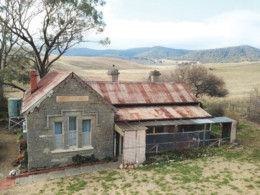Markets have been volatile recently. In the last month alone the Australian share market has fallen around 6%. There’s so much uncertainty now; the Ukraine war, the ongoing Covid pandemic, and now systemic global inflation and rising interest rates.
Markets hate this uncertainty. So, what should retirees be doing to protect their retirement incomes?
Investment losses hurt retirees
Investment losses impact on retirees the most. It comes down to mathematics. In the years around retirement investment returns matter most, and investment losses are most detrimental. That’s when our super balance is at it’s highest, so the losses are amplified.
The situation is made worse because retirees are drawing money out regularly to live on.
Dollar cost ravaging
The money must come from somewhere, so to fund income payments, retirees can sell down their growth assets like shares and property. It may not be intentional. Every time we sell the units in a Balanced option in our super we are selling the underlying assets. And when we sell our assets at depressed prices it locks in the losses and reduces our exposure to future returns.
This means that when markets recover the retiree won’t participate in the rebound.
Making it last
It may be tempting to switch to cash to avoid any chance of investment losses at this critical time. But retirement is long, and with rising inflation we need strategies to make sure the money lasts. The best way to manage inflation risk is to invest in shares and property.
Prices of shares and property prices are partially a function of the income they provide; dividends from shares and rent from property. Because dividends and rent generally go up with the cost of living, shares and property provide a hedge against inflation.
The answer is judicious rebalancing
There are ways to manage short-term market risk and long-term inflation risk at the same time. One way is to compartmentalise your nest egg into different buckets and to invest each bucket differently according to its purpose.
For example, by setting aside your buffer and the equivalent of one to three years of drawdowns and placing them in cash, you will achieve income certainty. This frees up the remainder of your portfolio to be invested for the medium and longer terms, where you can gain exposure to riskier assets like shares and property.
Since you are drawing down from your cash reserves on a regular basis, every month your investments are getting riskier. So, from time to time you will need to rebalance. With active advice, we can help you de-risk your investments, while seeking to responsibly manage the sale of growth-style assets.
This is just one framework for investing in retirement and there are other ways to manage risks in retirement. If you’d like to know more about how to make your money last in retirement, give us a call. We would love to help.










